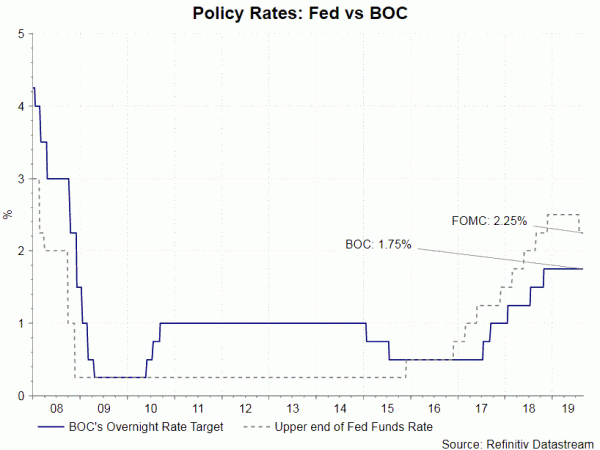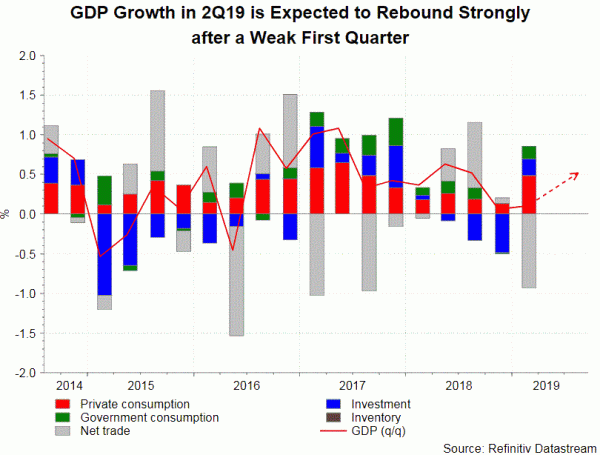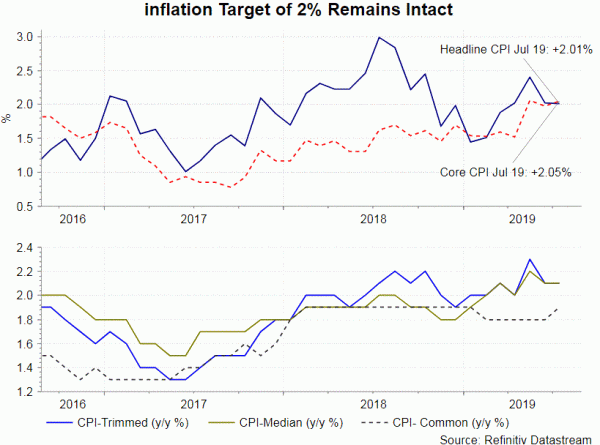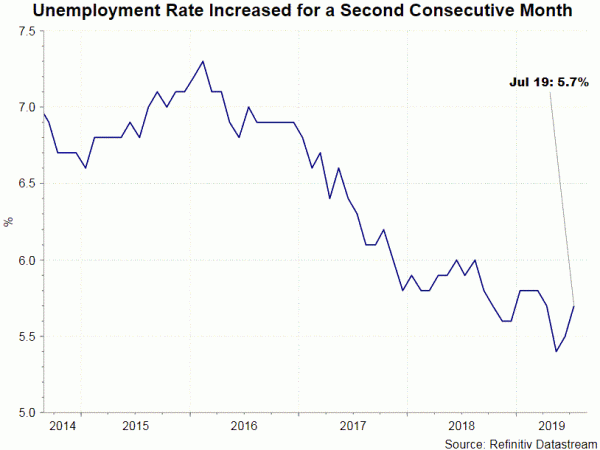Global economic slowdown, escalations of US- China trade war and further Fed funds rate cut have heightened speculations that BOC would have to lower its policy rate in coming months. We agree on this assessment but expect that the insurance cut would come in October.
US- China trade war has intensified again over the past few weeks. While the US agreed to delay the effective date of a portion of tariffs on China to December 15 from September 1, China on August 23 announced retaliatory tariffs on US$75B worth of US products and indicated that it will reinstate duties on cars. Trump then responded by raising the tariff rates on Chinese products by about 5%. Economic impacts of trade war on Canada are less than direct, mainly manifested in decline in oil prices and lower business confidence. In July, BOC estimated that the trade war would reduce Canada’s GDP growth by 2% by 2021. This, however, had not taken into account recent escalations.
Close trade relations with the US have made Fed’s monetary policy influential to that of BOC. The market has almost fully priced in another rate cut by the Fed in September, bringing the Fed funds rate to 1.75-2%. This is compared with BOC’s policy rate of 1.75%. Greater spare capacity and less strong housing market in Canada might not warrant its interest rates to stay above those of the US’. This could be a trigger for BOC to adopt an insurance rate cut.
However, resilience in domestic economic data suggests that BOC would prefer to stand on the sideline in August. GDP growth is expected to have rebounded +3% q/q annualized in 2Q19, from +0.4% in 1Q19. Inflation remains intact. Both headline and core CPI managed to stay at 2% y/y. Concerning BOC’s preferred gauges of inflation, CPI-median, CPI-trim and CPI- common also averaged at +2%. The disappointment came from the job market, however. Unemployment rate climbed+0.2 percentage point higher to 5.7% in July, although the participation rate slipped -0.1 percentage point to 65.6%. The number of payrolls declined -24.2K, compared with consensus of an increase of +12.5K.

 Risks to economic outlook have skewed to the downside. The next monetary policy would very likely be a rate cut. However, the second quarter economic outlook suggests that policymakers could take more time to assess the situation before taking precautionary action in response to the headwind to economic growth. Policymakers would probably guide in the August policy statement for any potential rate cut.
Risks to economic outlook have skewed to the downside. The next monetary policy would very likely be a rate cut. However, the second quarter economic outlook suggests that policymakers could take more time to assess the situation before taking precautionary action in response to the headwind to economic growth. Policymakers would probably guide in the August policy statement for any potential rate cut.












